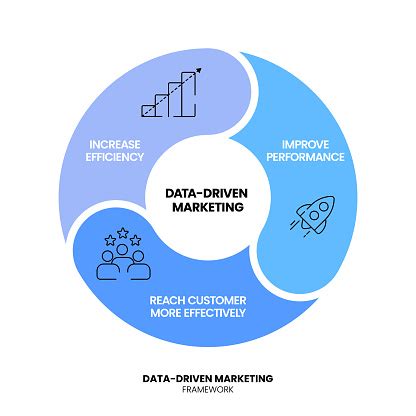Data-Driven Marketing for Dummies: Enter Marketing Science
Marketing has evolved. Gone are the days of gut feelings and guesswork. Today, successful marketing relies heavily on data. This article serves as your introduction to data-driven marketing, demystifying the process and showing you how to leverage the power of marketing science to achieve your goals. Whether you're a seasoned marketer looking to sharpen your skills or a complete beginner, this guide will equip you with the fundamental knowledge to navigate the exciting world of data-driven strategies.
What is Data-Driven Marketing?
Data-driven marketing is simply using data to inform every aspect of your marketing strategy. Instead of relying on intuition, you use concrete evidence – website analytics, customer behavior data, social media insights, and more – to make informed decisions about everything from campaign targeting to budget allocation. It's about using science to optimize your marketing efforts for maximum return on investment (ROI).
Why is Data-Driven Marketing Important?
In today's competitive landscape, businesses that embrace data-driven marketing significantly outperform those that don't. Here's why:
- Increased ROI: By understanding what works and what doesn't, you can optimize campaigns for better results and avoid wasting resources on ineffective strategies.
- Improved Targeting: Data allows you to identify and target your ideal customer with laser precision, increasing conversion rates and reducing wasted ad spend.
- Better Customer Understanding: Analyzing customer data reveals valuable insights into their behavior, preferences, and needs, enabling you to tailor your messaging and offers for greater resonance.
- Data-Backed Decisions: Instead of relying on assumptions, you make decisions based on facts, leading to more effective strategies and reduced risk.
- Enhanced Personalization: Data empowers you to create personalized experiences for each customer, fostering stronger relationships and loyalty.
What Types of Data Are Used in Data-Driven Marketing?
Several types of data feed the data-driven marketing engine:
- First-Party Data: This is data you collect directly from your customers, such as email addresses, purchase history, website activity, and survey responses. It's the most valuable type of data because it's directly related to your business.
- Second-Party Data: This is data collected by another company (but not a data broker) that you have a partnership with. This could be from a supplier or another business that shares similar customer demographics.
- Third-Party Data: This is data collected by third-party data providers, usually aggregated from various sources. It's often used for broader targeting and audience insights. However, privacy concerns are increasingly associated with third-party data.
How to Get Started with Data-Driven Marketing
Implementing a data-driven approach may seem daunting, but it can be broken down into manageable steps:
- Define Your Goals: What do you want to achieve with your marketing efforts? Increased brand awareness? More leads? Higher sales? Clear objectives are crucial for guiding your data analysis.
- Collect Data: Implement tracking tools on your website, integrate your CRM with your marketing automation platform, and utilize social media analytics.
- Analyze Your Data: Use data visualization tools and analytical platforms to identify trends, patterns, and insights within your data.
- Develop Hypotheses & Test: Based on your analysis, formulate testable hypotheses. Experiment with different approaches, track results, and iterate based on performance.
- Refine & Optimize: Continuously monitor your results, analyze the data, and adjust your strategies accordingly to optimize your campaigns.
What Tools Can Help with Data-Driven Marketing?
Numerous tools can assist in your data-driven journey:
- Google Analytics: A free and powerful tool for analyzing website traffic and user behavior.
- Google Ads: Provides detailed data on your advertising campaigns, allowing you to optimize for better ROI.
- Social Media Analytics: Each social media platform offers insights into audience engagement, post performance, and campaign results.
- CRM Systems (e.g., Salesforce, HubSpot): Store and manage customer data, facilitating personalized communication and targeted marketing.
- Marketing Automation Platforms (e.g., Marketo, Pardot): Automate marketing tasks and personalize customer journeys.
What Metrics Should I Track?
The specific metrics you track will depend on your goals, but some key metrics to consider include:
- Website Traffic: Unique visitors, page views, bounce rate.
- Conversion Rates: The percentage of visitors who complete a desired action (e.g., making a purchase, signing up for a newsletter).
- Customer Acquisition Cost (CAC): The cost of acquiring a new customer.
- Customer Lifetime Value (CLTV): The predicted revenue a customer will generate throughout their relationship with your business.
- Return on Ad Spend (ROAS): Measures the effectiveness of your advertising campaigns.
How Can I Measure the Success of My Data-Driven Marketing Efforts?
Measuring success hinges on establishing clear Key Performance Indicators (KPIs) aligned with your initial goals. Regularly monitor these KPIs, comparing results against benchmarks and analyzing trends to assess the effectiveness of your data-driven approach. This continuous monitoring allows for iterative improvements and maximizes your marketing ROI.
This article provides a foundational understanding of data-driven marketing. As you delve deeper, remember that continuous learning and adaptation are key to staying ahead in this dynamic field. Embrace the power of data, and watch your marketing results soar.

